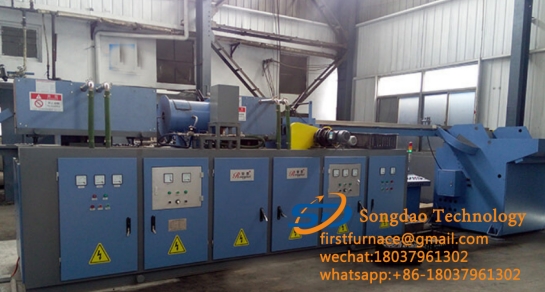- 08
- Apr
Mihin seikkoihin tulisi kiinnittää huomiota valurautaisen induktiolämmitysuunin sammutuksessa?
Mihin seikkoihin tulisi kiinnittää huomiota valurautaisen induktiolämmitysuunin sammutuksessa?
Kaikenlaisista valuraudoista harmaan valuraudan induktiokuumennusuunisammutus on vaikein. Harmaan valuraudan induktiokuumennusuunin sammutus on samanlainen kuin teräs, ja myös käytetyt sammutuslaitteet ovat samanlaisia. Seuraavat erot on syytä huomata:
The heating time is longer than that of steel parts. Generally, it should be more than a few seconds and should be kept for a period of time so that the insoluble structure can be dissolved into austenite. If the heating speed is too fast, it will cause excessive thermal stress and cracks.
The heating temperature should not be too high, the upper limit is 950℃, generally 900~930℃, different grades have an optimal temperature, when the heating temperature reaches 950℃, phosphorus eutectic will appear on the surface of the part, and there will be coarse retained austenite .
3) Jotta lämpötila siirtyisi hitaasti pinnalta ytimeen, on parasta olla sammuttamatta heti lämmityksen jälkeen, ja esijäähdytys 0.5 ~ 2 sekuntia on parasta.
4) Induction heating furnace quenching of iron castings generally uses polymer aqueous solution or oil as the quenching cooling medium, and some parts such as the cylinder liner are directly quenched with water as the quenching cooling medium, and the valve seat of the cylinder body is quenched by self-cooling.
5) Kun harmaarautavalukappaleet on sammutettu induktiokuumennusuunissa, tulee suorittaa matalalämpötilakarkaisu jännityksen poistamiseksi. Esimerkiksi sylinterin vuoraus tulisi karkaista tehotaajuudella
The matrix of ferritic malleable cast iron is ferrite and graphitic carbon. In order to dissolve carbon in austenite, it is necessary to increase the heating temperature (1050℃) and extend the heating time (up to 1min or more), so as to make a small part Graphite carbon is dissolved in austenite, and higher surface hardness can be obtained after quenching.

